The Vietnam War was a pivotal conflict that shaped the nation’s history, with the Cu Chi region serving as a critical battleground. Deep beneath this area, the Cu Chi Tunnels became a vital lifeline for the Viet Cong, showcasing their resilience and ingenuity. These tunnels played a significant role in the Viet Cong’s strategy, reflecting the hardships and determination that defined their fight during the Vietnam War.
Explore the legacy of Cu Chi Tunnels and the Vietnam War with Joy Journeys today at joyjourneys.com.vn
Contents
Cu Chi Tunnels and the Vietnam War: An Overview
The Cu Chi Tunnels, located in Cu Chi District, Ho Chi Minh City, hold profound historical significance. Originally constructed between 1946 and 1948 during the resistance against the French, the tunnels were built by the army and local people of Tan Phu Trung and Phuoc Vinh An communes to serve as a secure base for hiding, storing weapons, and conducting operations.
What were the Cu Chi Tunnels used for?
The Cu Chi Tunnels played diverse and critical roles throughout the Vietnam War. They served as communication hubs, living quarters, storage facilities for weapons and food, and even makeshift medical stations.
Strategically designed for both survival and combat, the tunnels provided the Viet Cong with a secure space to organize attacks, evade detection, and maintain supplies, making them a cornerstone of guerrilla warfare tactics.
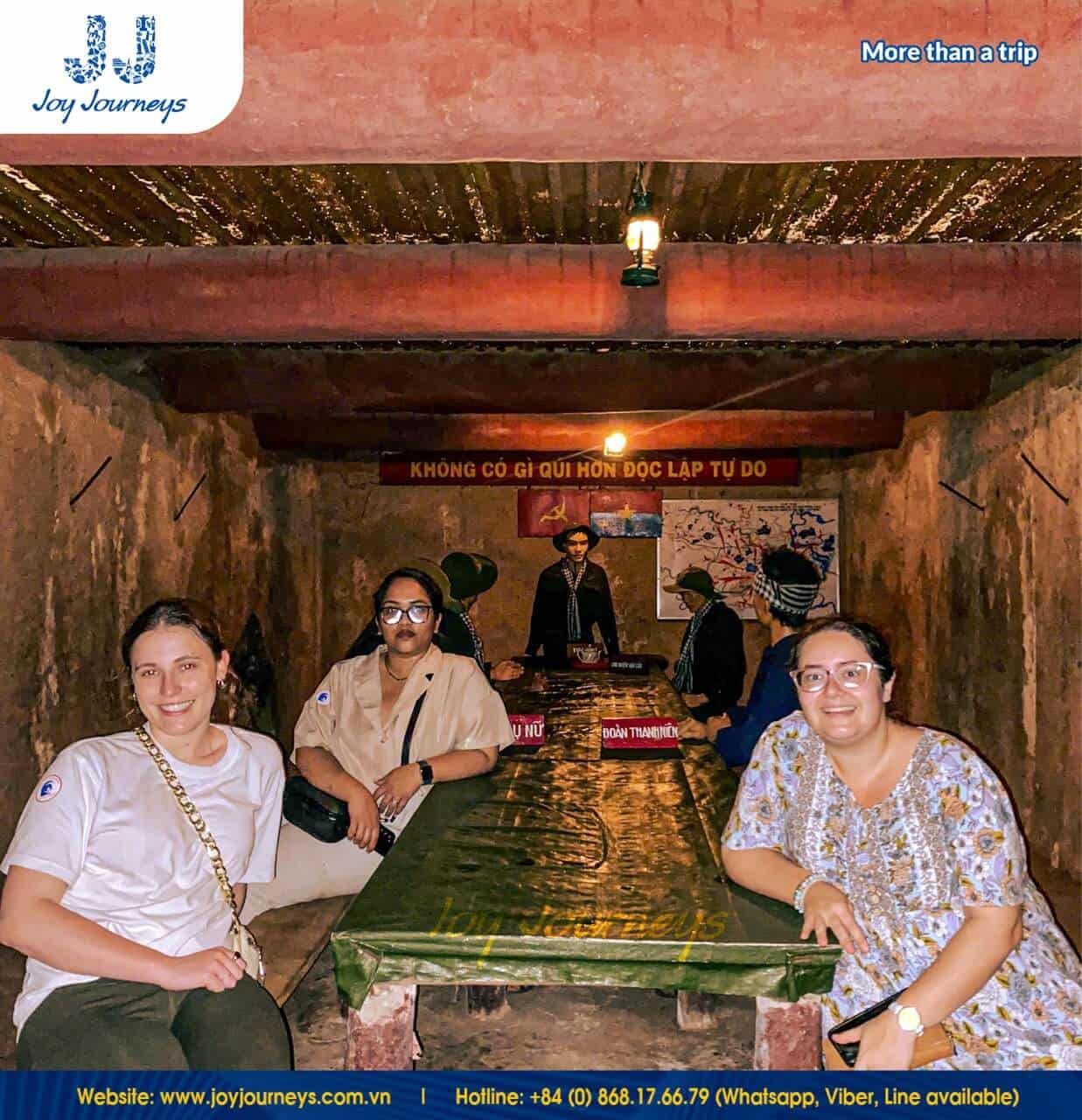
How deep were the tunnels in Vietnam?
Spanning an impressive 250 kilometers, the Cu Chi Tunnels were built with three layers reaching depths of up to 12 meters (nearly 40 feet). This strategic depth not only protected the tunnels from aerial bombardments but also ensured the safety of those living and operating underground.
These layers allowed the Viet Cong to move discreetly between different areas, enabling communication and support across vast distances.
Ingenious Tactics and Adaptations in the Cu Chi Tunnels
Guerrilla Warfare and Underground Tactics
The guerrilla warfare tactics employed in the Cu Chi Tunnels demonstrated incredible ingenuity and adaptability.
Fighters would suddenly appear and disappear, using innovative strategies such as iron and bamboo spikes, wasp attacks, clever mine placement and unpredictable grenade launchers.
These methods elevated guerrilla tactics to a true art form, demonstrating the resourcefulness and determination of the Viet Cong.
Life Underground: Resourcefulness and Resilience
Life in the Cu Chi Tunnels was a testament to human resourcefulness and resilience in the face of extreme hardship. The damp, stuffy tunnels lacked proper ventilation and light, relying on candles or flashlights for illumination.
Oxygen was often scarce, and when someone fainted, they had to be quickly carried to a tunnel entrance for artificial respiration to regain consciousness.
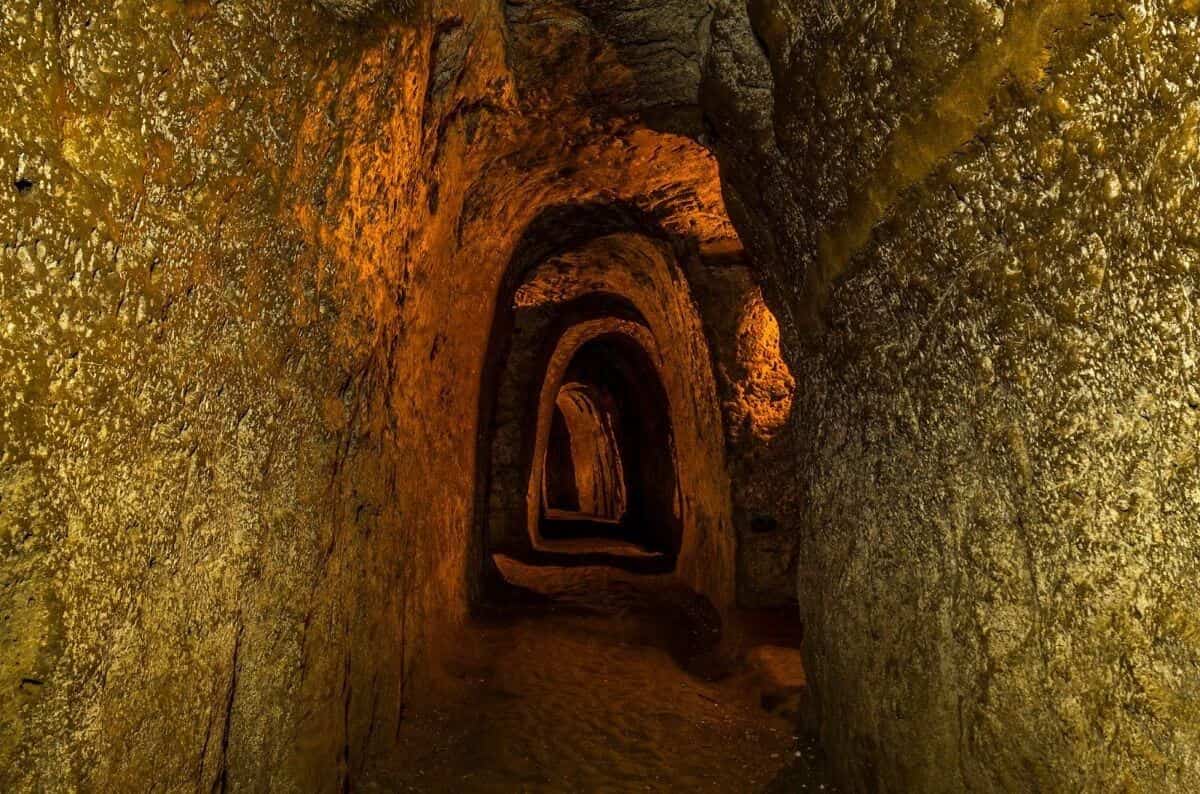
The challenges are exacerbated during the rainy season, when the tunnels become home to insects, snakes, and centipedes, adding to the harsh conditions.
For women, life underground is especially arduous—some give birth and raise children in these confined spaces, demonstrating extraordinary courage and adaptability in the face of adversity.
The Tunnels’ Impact on the War and its Aftermath
Turning Points in the Conflict
During the 1968 Tet Offensive, the Liberation Army of the South launched a bold attack on Saigon, departing from the intricate Cu Chi tunnel system. This offensive served as a profound and meaningful rehearsal, laying the groundwork for the 1975 Spring Offensive and Uprising, which ultimately brought the Vietnam War to its conclusion.
The Cu Chi Tunnels and the Vietnam War are forever intertwined, symbolizing resilience and strategy during pivotal moments in history.
A Psychological Weapon
The tunnels also became a powerful psychological weapon against American forces. Due to their small size, “Rat soldiers,” often of Asian descent or with smaller builds, were tasked with navigating these narrow underground networks—a perilous mission fraught with danger.
Ambushes, camouflaged fake tunnels filled with traps, and the constant threat of unseen enemies instilled fear and insecurity in those tasked with confronting the Viet Cong.
Cu Chi After the War
Despite its strategic role during the war, Cu Chi continues to bear the scars of conflict. Veterans and civilians carry physical and emotional wounds, while victims of toxic chemicals still suffer from illnesses and deformities.
Families remain separated, and the land itself has not fully healed—vegetation is deformed, and areas contaminated with poison or littered with unexploded ordnance remain dangerous reminders of the past. Even decades later, the Vietnamese people persevere, striving to overcome the lasting effects of war.
Experience the Cu Chi Tunnels Today
Preservation and Heritage
The Cu Chi Tunnels stand as a remarkable testament to Vietnam’s military ingenuity and the unyielding spirit of the “steel land” people. Recognized as a symbol of revolutionary heroism, this unique underground network embodies the resilience and creativity that defined a critical chapter in the nation’s history.
In acknowledgment of its historical and cultural significance, the Cu Chi Tunnels were designated a special national relic by the Prime Minister under Decision No. 2367/QD-TTg on December 23, 2015.
Visiting the Cu Chi Tunnels
The tunnels are open to visitors daily from 07:00 to 17:00, offering a chance to explore this incredible piece of Vietnam’s heritage.
- By Bus: To visit the Ben Duoc tunnels, take Route 79 from Cu Chi bus station. For the Ben Dinh tunnels, follow Route 13 to An Suong bus station, transfer to Route 122 to Tan Quy bus station, and then take Route 70 to the site.
- By Private Transport: Visitors can travel by motorbike or car along the Truong Chinh – An Suong Intersection – Hoc Mon – TL15 – Cu Chi Tunnels route.
- By Taxi: For groups, traveling by taxi can be a cost-effective and convenient option.
Joy Journeys: Authentic and Insightful Tours
Discover the Cu Chi Tunnels in the most authentic and engaging way with Joy Journeys. Dedicated to creating experiences that are “more than a trip,” Joy Journeys ensures that every tour is guided by skilled, English-speaking professionals who are polite, enthusiastic, and passionate about sharing Vietnam’s history and culture.
To guarantee personalized attention, all tours are limited to fewer than 10 participants, providing each guest with a meticulously crafted and highly immersive journey.
Joy Journeys offers a variety of thoughtfully designed Cu Chi Tunnels tours, including:
- Ben Duoc ‘Less-Crowded’ Cu Chi Tunnels Half-Day Tour: Dive into history with this unique tour featuring authentic experiences like crawling through the tunnels, sampling traditional tapioca, and watching historical documentaries.
- Saigon History & Cu Chi Tunnels with War Museum 1-Day Tour: Enrich your knowledge of Vietnamese history by visiting iconic Saigon landmarks such as the Notre Dame Cathedral, the War Remnants Museum, and a hidden weapons bunker, combined with an exploration of the Cu Chi Tunnels.
- ‘Cost-Saving’ Cu Chi Tunnels & Mekong Delta 1-Day Tour: Blend history with culture as this tour takes you from the tunnels to the picturesque Mekong Delta. Enjoy activities like cruising along serene rivers, listening to traditional music, and more.
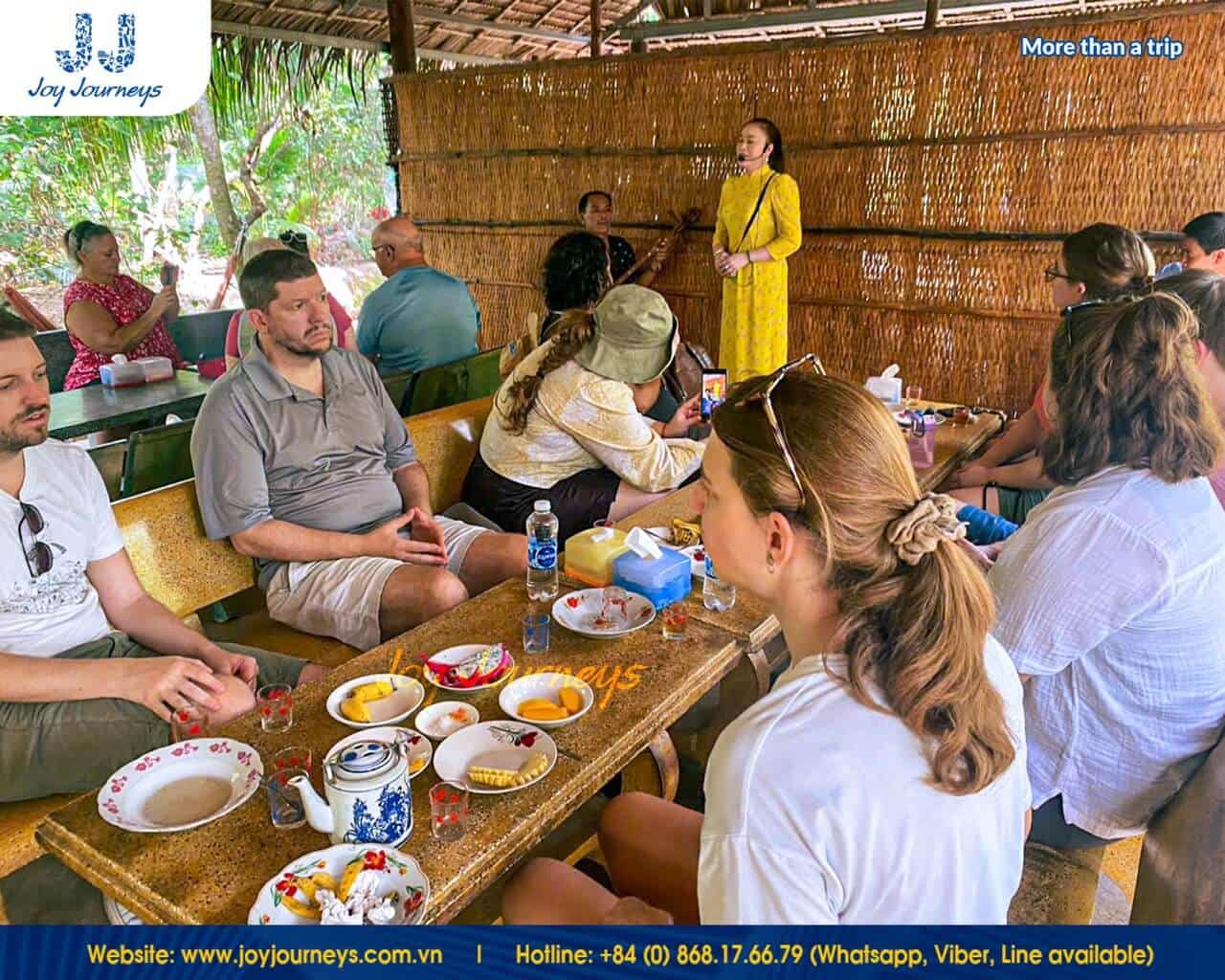
For a tailored experience, visitors can also request private tours with customized itineraries by contacting the Joy Journeys team via WhatsApp at +84 (0) 868.17.66.79.
Traveler Testimonials
Markus Schienagel from Germany described his tour to the Ben Duoc tunnels as wonderful and informative. He praised the guide, Jenny, for her excellent explanations about the differences between South and North Vietnam.
Markus appreciated the non-touristy atmosphere and found crouching through 40-meter tunnels a unique experience. He highly recommends visiting the Cu Chi Tunnels, calling them a must-see destination.

Millie highly recommends visiting with Tommy as the tour guide. According to her, Tommy was an exceptional guide, demonstrating extensive knowledge about the war and providing clear answers to all the questions posed during the tour.
She appreciated gaining a deeper understanding of how Vietnam fought during the war and even experiencing a sample of what the Viet Cong ate over three decades. While thoroughly enjoying the experience, she expressed her only regret: wishing the tour had been longer.
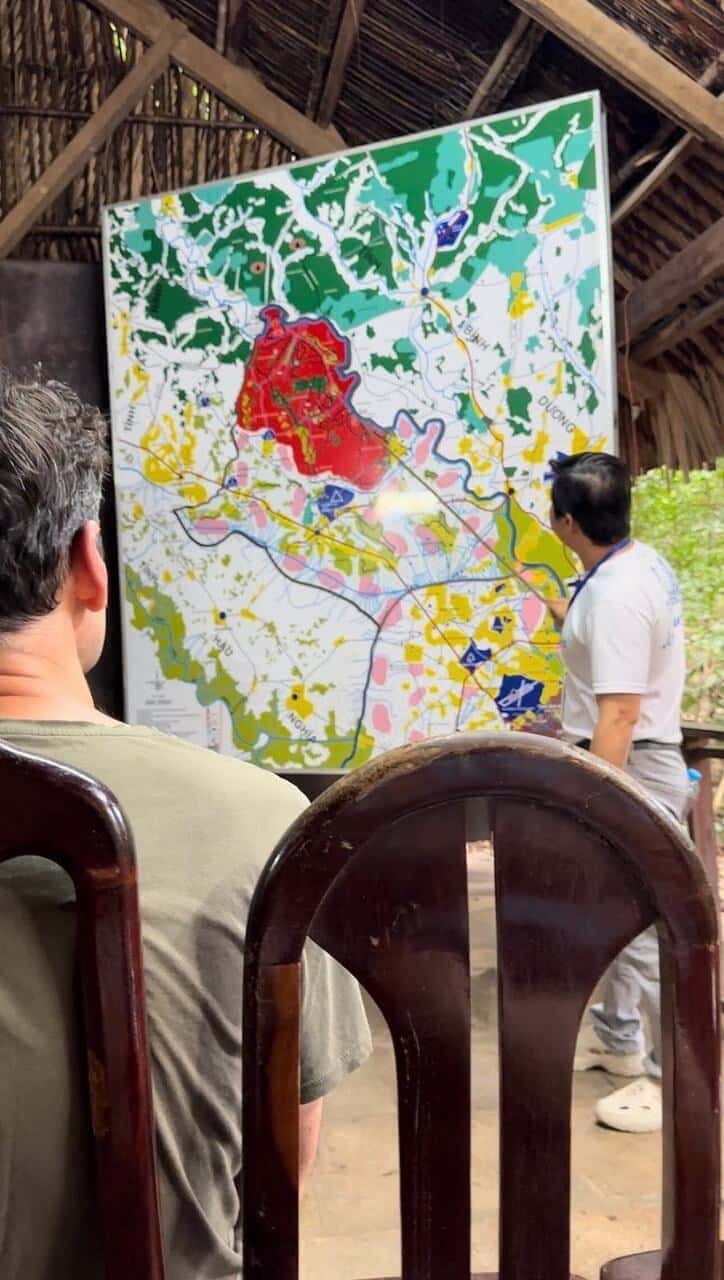
Janner from Oman shared her experience, describing the tour as “informative, interactive, fun, astonishing, and extraordinarily humbling.” She highlighted the guide, Tom, for his extensive knowledge of history, politics, warfare, and tactics and his well-paced and engaging delivery of information. Janner praised the small group setup offered by Joy Journeys, emphasizing it as a truly positive experience and concluding with a heartfelt “Great job!”.
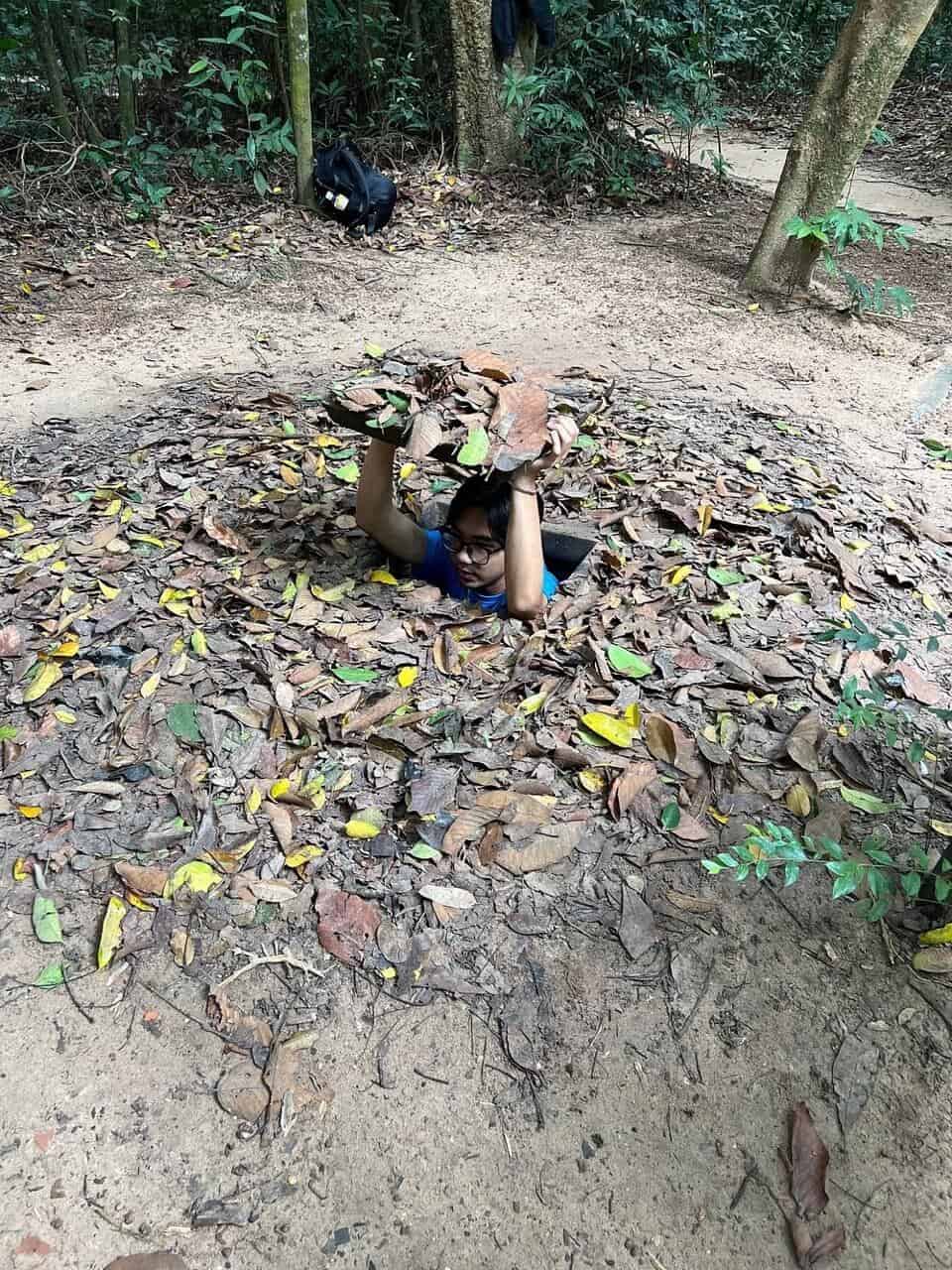
Cu Chi Tunnels and the Vietnam War Frequently Asked Questions
How were the Cu Chi Tunnels used in the Vietnam War?
The Cu Chi Tunnels served a variety of crucial functions during the Vietnam War. They were used as communication hubs, living quarters, medical stations, and strategic planning areas. The tunnels also played a vital role in trapping enemy soldiers, providing a hidden and safe location for the Viet Cong to launch surprise attacks.
What was the most feared unit in Vietnam?
The 101st Airborne Division, nicknamed the “Screaming Eagles,” was considered one of the most feared military units in the Vietnam War. Within this division, the Tiger Force, a reconnaissance patrol unit, gained notoriety for its brutal tactics and involvement in war crimes against civilians.
What happened to Ho Chi Minh during the Vietnam War?
During the Vietnam War, Ho Chi Minh City, formerly Saigon, was the capital of South Vietnam. However, on April 30, 1975, North Vietnam captured the city, marking the end of the war and the beginning of Vietnam’s reunification.
What was the life expectancy of a tunnel rat in Vietnam?
Some data shows that tunnel rats only survived about 7 seconds after entering the Cu Chi tunnels.
Conclusion
The Cu Chi Tunnels and the Vietnam War offer profound insights into the courage and resourcefulness that shaped Vietnam’s history. This iconic site serves as a powerful testament to the sacrifices made for independence. Visiting the Cu Chi Tunnels allows one to connect with the past and better understand the war’s impact. Plan your visit today and experience history like never before.


Related Posts
Ho Chi Minh To Mekong Delta: Best Transport Options Guide
The journey from Ho Chi Minh to Mekong Delta offers travelers an exciting transition from Vietnam’s bustling commercial capital to the tranquil waterways and lush landscapes of the country’s agricultural heartland. This comprehensive guide explores all transportation options available for reaching the Mekong Delta, helping you choose the best method based on your budget, time […]
My Tho City: A Complete Guide to Vietnam’s Mekong Delta Gateway
My Tho city, the charming capital of Tien Giang Province, serves as an ideal gateway to explore the enchanting Mekong Delta region. Located just 70 kilometers southwest of Ho Chi Minh City, this riverside city offers visitors an authentic taste of Vietnamese rural life, where ancient traditions blend seamlessly with modern tourism. Whether you’re seeking […]
Mekong Delta Things to Do in One Day: What to Expect?
The Mekong Delta is a vibrant maze of rivers, canals, and green fields, where floating markets, fruit orchards, and traditional villages showcase the authentic charm of southern Vietnam. With limited time in Vietnam, you might wonder about the Mekong Delta things to do in one day and whether such a brief visit can truly capture […]